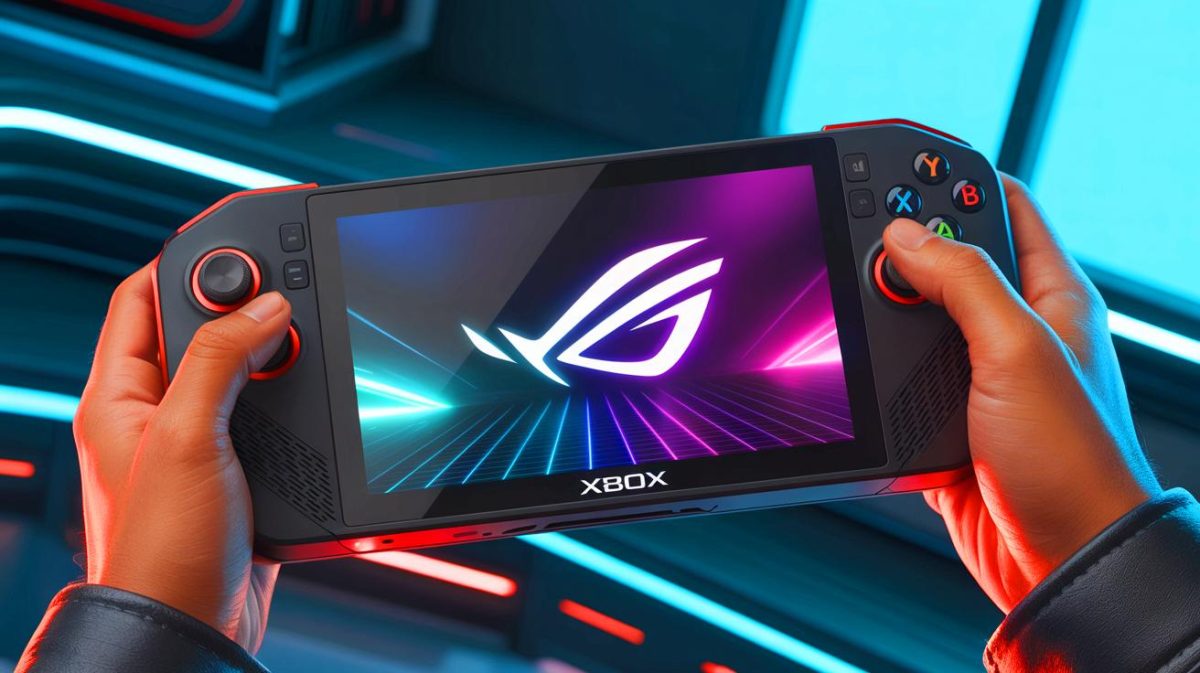| IN A NUTSHELL |
|
The advent of the Rog Xbox Ally has stirred discussions in the gaming world, especially with its decision to feature an LCD screen over the more advanced OLED technology. Partnering with ASUS, Microsoft is entering the handheld console market with a product that aims to balance technical prowess and commercial viability. This decision to use LCD, while initially surprising, underscores a strategic choice that prioritizes certain features over sheer display brilliance. The gaming community is left wondering: how will this affect the overall gaming experience on Microsoft’s latest venture?
LCD Instead of OLED: A Deliberate Choice
In 2025, during the Xbox Games Showcase, the announcement of the Rog Xbox Ally marked a significant milestone for Microsoft. This portable console, developed in collaboration with ASUS, sparked excitement, particularly for its high-end model, the Ally X, powered by a Ryzen Z2 Extreme AI chip. However, the decision to use an LCD screen instead of OLED drew criticism. Despite expectations for an OLED screen, both ASUS and Microsoft opted for LCD, a choice that puzzled many, especially since the Nintendo Switch 2 also skipped OLED.
Why step back visually in 2025? The answer lies in VRR (Variable Refresh Rate). This image synchronization technology eliminates screen tearing and enhances in-game fluidity, making it a priority. Whitson Gordon, ASUS’s Senior Marketing Director, stated in an interview, “We love OLED at Rog (…), but we don’t want to give up VRR.” Although ASUS experimented with OLED prototypes featuring VRR, the results were unsatisfactory. The combination consumed too much battery, impacting autonomy and driving up costs. Consequently, they returned to a 7-inch, 1080p LCD screen with a 120 Hz refresh rate.
The Secondary Device That Deserves No More
Behind the technical decision lies a commercial rationale: the Rog Xbox Ally is not designed as a primary device. It is intended to complement gaming PCs or Xbox Series consoles, which justifies not aiming for top-tier specifications across the board. Gordon explains that market data is clear: players are not willing to pay more for a device that won’t replace their main setup.
In this context, envisioning an OLED version with VRR at an affordable price is challenging. The brand is aware and prefers to focus on delivering a smooth experience, even if it means sacrificing the vivid colors and infinite contrasts of OLED. This strategy aligns with Nintendo’s, which, despite the success of its Switch OLED, reverted to LCD with its new generation. Ironically, ASUS also sells gaming smartphones with OLED screens but without VRR, a compromise deemed unacceptable for its portable console, highlighting that the debate is primarily about technical priorities.
Technical Priorities and Market Realities
Asus and Microsoft’s decision to prioritize VRR over OLED is rooted in a broader understanding of market demands and technical feasibility. In portable gaming, battery life and cost are critical factors that influence consumer decisions. The VRR technology, despite its higher power consumption, offers a gameplay experience that many gamers consider essential. This highlights a key point: while having the most advanced display technology is appealing, it may not always align with the practical needs and expectations of the market.
Moreover, the choice reflects a strategic move to position the Rog Xbox Ally as a versatile yet affordable option in a competitive market. By focusing on the essentials that enhance gaming fluidity, ASUS and Microsoft are betting that consumers will appreciate the balance of performance and practicality over the allure of OLED’s superior visuals. This decision underscores a commitment to meeting gamers where they are, offering a device that complements, rather than replaces, existing gaming setups.
The Future of Portable Gaming Consoles
The Rog Xbox Ally’s launch with an LCD screen offers valuable insights into the future of portable gaming consoles. As technology evolves, manufacturers must navigate the intricate balance between cutting-edge features and consumer accessibility. The emphasis on VRR over OLED signifies a shift towards prioritizing performance enhancements that directly impact gaming experiences.
As the gaming industry continues to innovate, the choices made by companies like ASUS and Microsoft will shape consumer expectations and industry standards. Will gamers favor the practical benefits of technologies like VRR, or will the allure of OLED’s visual superiority eventually prevail? This ongoing debate will undoubtedly influence future developments in portable console design, as manufacturers strive to deliver devices that meet the diverse needs of the gaming community.
The decision to use an LCD screen in the Rog Xbox Ally instead of OLED has sparked significant discussion. As the gaming world watches closely, the question remains: how will this choice impact the long-term success of Microsoft’s foray into portable gaming?
Did you like it? 4.6/5 (23)







Why would Microsoft choose LCD over OLED in 2025? It feels like a step backward! 🤔
I can’t believe they’re prioritizing VRR over a stunning OLED display. What’s next, sacrificing sound quality? 😆
Thanks for the detailed explanation of the Xbox Portable’s screen choice. It makes more sense now!
This is a bold move by Microsoft. I hope the VRR is worth it! 😬
LCD screens in 2025? Come on, Microsoft, we deserve better!
How does the battery life compare with the Switch 2? I hope it’s at least a bit better. 🔋
So, this is supposed to be a secondary device? What’s the point if it’s not even top-tier? 🤷♂️
Honestly, I was excited for the Xbox Portable, but this screen news is a letdown.